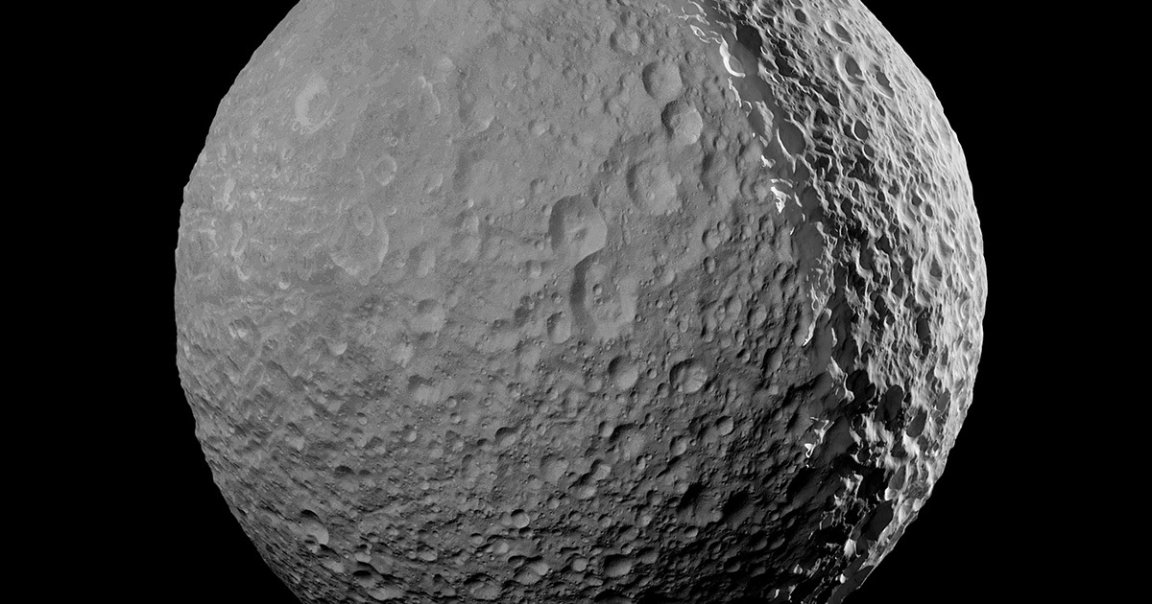
Switching Teams
The evidence that Mimas, Saturn’s “Death Star” moon, may be home to a giant underground ocean is growing.
As Knowable Magazine reports, a new study not only makes a case for an ocean on the moon, but it might help explain some of the discrepancies that have led some scientists to criticize the concept of a Mimesean ocean.
Since 2014, when scientists studying data from NASA’s Cassini probe found that Mimas has a weird wobble that seems to only occur on water-bearing satellites, there’s been ample pushback to the concept that the moon may have an ocean hidden under its icy surface. Because there were no cracks on its icy surface that would accompany such an ocean existing on the heavily-cratered “Death Star”-like moon, detractors argued that the theory was a non-starter.
One of those skeptics, planetary scientist Alyssa Rhoden, has apparently come around to the idea. She and her colleagues at the Southwest Research Institute in Boulder, Colorado published a study in the journal Earth and Planetary Science Letters suggesting that Mimas may have a young ocean hidden underneath its icy exterior after all.
In the ensuing years, there’s been more and more evidence lending credence to the Mimas ocean theory — and after a study published earlier this year in the journal Nature, scientists like Rhoden are now more interested in the how than the if.
Critical Thinking
One of the biggest previous arguments against Mimas’ hidden ocean is that it would be too cold to sustain flowing water without some sort of known internal heat force — but the planetary scientist behind the more recent study has a solution for that quandary, too.
“Distant oceans might at first seem out of the question,” Rhoden told Knowable. “Heat to melt ice is hard to come by so far from the Sun. But thanks to a gravitational quirk, the outer solar system can be quite balmy.”
The ex-skeptic points to Jupiter’s ocean moon Europa, which has the interior friction necessary to sustain a flowing ocean below its surface thanks to its elliptical orbit that stretches and releases the satellite over time. As that friction occurred, the conditions became ripe for water to form underneath the surface, but because the ocean is “so young” at “merely ten million years old,” Rhoden says that it hasn’t left any visible surface fractures that would have pointed to its existence with telescopes.
Overall, this research arc has been “a little sad” because Rhoden and her team believe that Mimas will eventually lose its ocean as it keeps losing heat due to its wonky elliptical orbit — but it still is cause for hope that things in our Solar System can defy initial observations.
More on Saturn: Titan Covered With Fragments of Obliterated Moons, Scientists Say